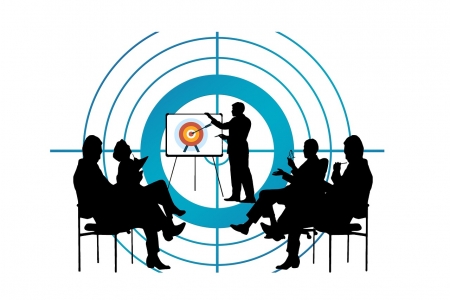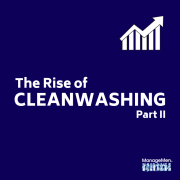The Rise of Cleanwashing: Part II
When people are first introduced to Six Sigma, a program used by businesses for continuous improvement, one of the first things they’re asked to do is to draw a happy pig. Without any instruction, you can imagine the different types of drawings people create! After everyone shows each other their work and the variation in the drawings becomes apparent, they are then provided a set of instructions and asked to draw the pig again. This time, they find that the drawings look remarkably similar. The point of the exercise is to demonstrate how when a group of people have instruction, most will produce a consistent result.
The McDonald’s empire was built on around consistency; consistency that was structured around the pillars of “quality, service, cleanliness and value.” Ray Kroc knew that when you’re looking for a consistent product, you need to standardize the products and the systems in place. In fact, he’s quoted as saying, “If I had a brick for every time I’ve repeated the phrase Quality, Service, Cleanliness and Value, I think I’d probably be able to bridge the Atlantic Ocean with them.”
Standardized systems and products are what make a Big Mac in Des Moines, IA, taste the same as a Big Mac served in Kroc’s first restaurant in Des Plaines, IL.
Standardization is the hallmark of efficiency—just think about the ISO 9000 quality management and quality assurance standards. But for some reason, standards are lost when it comes to custodial departments. Organizations implement standardized processes throughout their customer service, warehouse, purchasing and human resource departments… but they neglect to think about how the custodial department could benefit from standardized processes.
How the Absence of Standards Can Result in Cleanwashing
In the first part of this series, we discussed the rise of “greenwashing” and how when the demand for sustainable products grew, suppliers marketed their products as good for the environment when they really weren’t.
Similarly, there are a lot of cleaning companies out there that make claims that they know how to clean, but they often lack the knowledge, processes and systems to ensure a consistent level of cleanliness. They think that anyone can pick up a mop and clean. But when was the last time they changed the water and solution in the mop bucket? Are they using the same mop to clean the restrooms, hallways and kitchen areas? Do they put up the proper signage in public areas to reduce the chance of slips and falls?
This is an example of “cleanwashing.”
We’ve found that cleanwashing happens more often then you’d think because so many people believe that anyone can clean. But another part of the issue is that people don’t think or ask how something is cleaned, just that it looks clean. And that’s a dangerous oversight. As anyone in this industry knows, there are a lot of things that can go undetected to the visible eye. Just ask any cleaner who has worked on a cruise ship and had to deal with Norovirus or a custodian who has had to deep clean a school during a flu outbreak.
Let’s think back to the happy pig picture. What happens when you hand someone a flat mop with little to no instruction? Just because the floor has been mopped, has it been cleaned? The individual might work from left to right, he or she might walk in circles around the floor, walk around areas that have already been mopped—there’s really no limit to the way one might approach mopping a floor. They could be moving soil around, not removing the soil.

How Does Standardization Help Improve Organizational Excellence?
When we think of standardizing processes, you may think that it would only be beneficial to franchise operations or by businesses that repeat work throughout more than one location. For example, a contract cleaner would benefit from standardizing job duties and processes so someone can pick up a job in Building A and repeat it in Building D or F—wherever they are needed, delivering the same exact quality of work.
But occupational theorists have found that the benefits of a standardizing processes go beyond delivering a consistent product. It can also be a tool to empower and retain employees. Standardization takes the guesswork from the task and means that employees have an established, time-tested process to use. Organizations use standardized processes to boost productivity and improve employee morale, because employees can take pride in knowing that they have mastered a given task. Fast Company says that organizational standardization can fuel innovation. And there’s a good chance we’ll only see more standardization in the future. The prestigious Wharton School of Business says companies are increasingly moving toward standardization.
When it comes to cleanwashing, standardization gives anyone who is either directly or indirectly responsible for the cleaning and maintenance in their building with a set of guidelines. It also allows for the development of metrics. In an ideal scenario, all custodial positions are workloaded, and workers are kitted with the exact tools and supplies they need for the day. They follow a specific set of instructions detailed on a card so areas are cleaned the exact same way, each time, delivering a standard result and a consistent level of clean throughout every building.
How Can We Combat Cleanwashing?
Too often, custodial work is commoditized, meaning that people don’t understand the value of the service and shop it out to the lowest-priced provider. While this trend is starting to change, it’s up to the people who provide custodial services that are built upon standardized processes and procedures to educate stakeholders about what they bring to the table. A few important talking points to cover might include:
— Removing soil versus moving soil around.
— Worker training and safety.
— The impact of cleaning on health.
— The cost versus the price of clean.
— How standardization impacts the overall quality of clean.
As we illustrated in the first part of this series, there is an increasing demand for clean facilities. People spend money in buildings that are clean. But it’s important for the people who live, work and visit those facilities to understand that just because something LOOKS clean, it doesn’t mean that it necessarily IS clean. When there’s a standardized process in place, you have the peace of mind in knowing that the outcome is consistent — every time.

